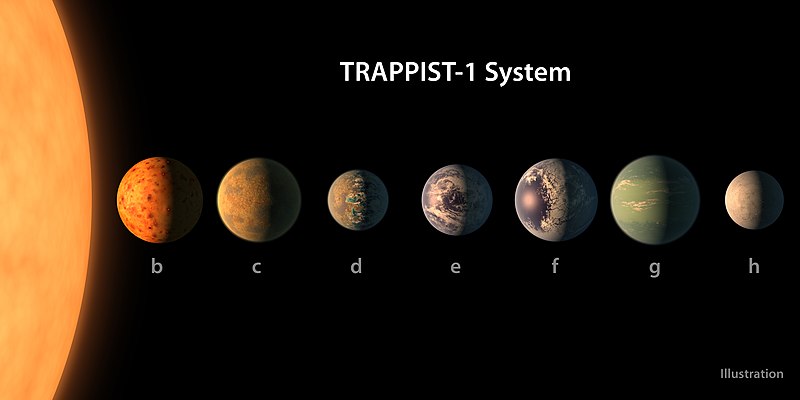Lêer:PIA21422 - TRAPPIST-1 Planet Lineup, Figure 1.jpg

Grootte van hierdie voorskou: 800 × 400 piksels. Ander resolusies: 320 × 160 piksels | 640 × 320 piksels | 1 024 × 512 piksels | 1 280 × 640 piksels | 2 560 × 1 280 piksels | 6 000 × 3 000 piksels.
Oorspronklike lêer (6 000 × 3 000 piksels, lêergrootte: 2,63 MG, MIME-tipe: image/jpeg)
Lêergeskiedenis
Klik op die datum/tyd om te sien hoe die lêer destyds gelyk het.
| Datum/Tyd | Duimnael | Dimensies | Gebruiker | Opmerking | |
|---|---|---|---|---|---|
| huidig | 18:39, 22 Februarie 2017 |  | 6 000 × 3 000 (2,63 MG) | PhilipTerryGraham | User created page with UploadWizard |
Lêergebruik
Die volgende bladsy gebruik dié lêer:
Globale lêergebruik
Die volgende ander wiki's gebruik hierdie lêer:
- Gebruik in ar.wikipedia.org
- Gebruik in bn.wikipedia.org
- Gebruik in ca.wikipedia.org
- Gebruik in el.wikipedia.org
- Gebruik in en.wikipedia.org
- Gebruik in es.wikipedia.org
- Gebruik in et.wikipedia.org
- Gebruik in fi.wikipedia.org
- Gebruik in fi.wikibooks.org
- Gebruik in glk.wikipedia.org
- Gebruik in id.wikipedia.org
- Gebruik in ja.wikipedia.org
- Gebruik in ku.wikipedia.org
- Gebruik in lt.wikipedia.org
- Gebruik in ms.wikipedia.org
- Gebruik in my.wikipedia.org
- Gebruik in nl.wikipedia.org
- Gebruik in pnb.wikipedia.org
- Gebruik in pt.wikipedia.org
- Gebruik in ro.wikipedia.org
- Gebruik in tl.wikipedia.org
- Gebruik in tr.wikipedia.org
- Gebruik in uk.wikipedia.org
- Gebruik in ur.wikipedia.org
- Gebruik in vi.wikipedia.org




